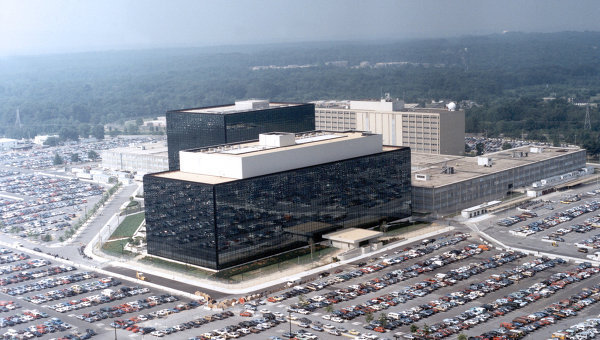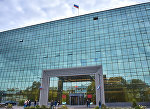MOSCOW, January 13 (RAPSI, Ingrid Burke) - Despite official claims that certain NSA surveillance programs have proved instrumental in averting dozens of terror threats, these methods appear to have proven significantly less valuable than their more traditional counterparts in terms of having provided impetus for the launch of terrorism investigations, according to a report published Monday by nonpartisan US think tank the New America Foundation (NAF).
Shortly after NSA whistleblower Edward Snowden leaked the first of a series of revelations about his former agency’s intelligence-gathering methods in early June, US President Barrack Obama assured the public that the surveillance programs at issue were highly effective, with minimal privacy implications.
Speaking in Berlin, the president explained: “This is not a situation where we simply go into the Internet and start searching any way that we want. This is a circumscribed, narrow system directed at us being able to protect our people. And all of it is done under the oversight of the courts. And as a consequence, we’ve saved lives. We know of at least 50 threats that have been averted because of this information not just in the United States… And the encroachment on privacy has been strictly limited by a court-approved process to relate to these particular categories.”
The president’s reassurances that at least 50 potential crises had been averted were echoed by other high-ranking officials.
These proclamations inspired NAF’s eventual conclusion that, “the role that NSA ‘bulk’ surveillance of phone and email communications records has had in keeping the United States safe from terrorism shows that these claims are overblown and even misleading.”
In its own words, the report claims that an analysis of relevant investigative and case data: “demonstrates that traditional investigative methods, such as the use of informants, tips from local communities, and targeted intelligence operations, provided the initial impetus for investigations in the majority of cases, while the contribution of NSA’s bulk surveillance programs to these cases was minimal.”
This conclusion stems from NAF’s analysis of the cases of 225 individuals that have been indicted, convicted, or killed since the 9/11 attacks. The organization included in its dataset US citizens and residents falling into two groups: those that either were indicted for crimes inspired by or linked to al-Qaeda and its affiliates, and those that were killed prior to indictment – but who were widely reported to have worked with or to have been inspired by al-Qaeda or its affiliates.
Analysts focused primarily on the factors at play in the initial decisions to launch investigations into the activities of these alleged extremists, with a sight to determining the importance of the role of the NSA bulk surveillance programs in preventing acts of terrorism. In doing so, researchers sifted through court records, news reports, and other available evidence.
The cases were then divided into various different categories based on the means by which terrorism cases were initiated.
The NSA’s legendary secrecy begs the question of whether the government would necessarily have disclosed the true nature of the role potentially played by the agency’s programs in every investigation and criminal case initiated. In its report, NAF acknowledges this consideration, reasoning: “Though this presents a challenge to our analysis, it seems unlikely that the government would conceal major cases of the NSA bulk surveillance programs’ purported successes at a time when it has to defend the programs’ very existence.”
Nontraditional methods
Sections linked to nontraditional methods include: NSA Bulk Collection Under Section 215 of the USA PATRIOT Act, NSA Surveillance Targeting Non-U.S. Persons Under Section 702 of the FISA Amendments Act, and NSA Surveillance Under an Unknown Authority.
A US Department of Justice information sheet describes the function of Section 215 of the USA PATRIOT Act as one that: “Allows the [Foreign Intelligence Surveillance Court], in an investigation to protect against international terrorism or clandestine intelligence activities, to issue an ex parte order requiring the production of any tangible things.”
According to the NAF report, the bulk collection of US telephone metadata is rooted in this Section. The heavy-on-the-tongue, but recently ubiquitous term “telephony metadata” refers to “comprehensive communications routing information, including but not limited to session identifying information…, trunk identifier, telephone calling card numbers, and time and duration of call,” according to the FISC order first leaked by Snowden. Notably, the following items fall outside of the term’s scope: “the substantive content of any communications…, or the name, address, or financial information of a subscriber or customer.”
Section 702 of the FISA Amendments Act provides procedures for the targeting of non-US persons located outside of the US, for purposes of acquiring foreign-intelligence information. According to the law’s text, an individual targeted under the Section must be “reasonably believed” to be located outside of the US.
Notably, the law’s text imposes certain limitations on acquisitions authorized in accordance with the Section, including – relevantly – that such “may not intentionally target a person reasonably believed to be located outside the United States if the purpose of such acquisition is to target a particular, known person reasonably believed to be in the United States.”
Still, NAF claims, “FISA does not allow the NSA to target communications of U.S. citizens, but the surveillance program sweeps in large amounts of U.S. citizens’ communications because it allows the NSA to collect for foreign intelligence purposes the communications of anyone ‘reasonably believed’ to be outside of U.S. borders.”
The report goes on to assert that the reasonable belief requirement has been interpreted liberally, stating: “the NSA has said it needs only to believe with 51 percent confidence in the target’s ‘foreignness’ to monitor his or her communications.”
According to the report, of the 225 cases considered, Section 215 intelligence gave rise to four, or 1.8 percent. Section 702 gave rise to ten, or 4.4 percent. Three cases, or 1.3 percent, were initiated by use of NSA surveillance drawn from “unknown authority.”
Traditional methods
Sections based on more traditional methods include: tips from a suspected extremist’s family or community (40 cases, 17.8 percent); tips from an undercover informant (36 cases, 16 percent); information derived from intelligence operations outside of the NSA’s scope (18 cases, 8 percent); or information derived from other such law enforcement initiatives (12 cases, 5.3 percent); self-disclosure in cases where a suspected extremist publicized his own activity (nine cases, 4 percent); and suspicious activity reports filed by individuals outside of the suspected extremist’s family or local-community circles (19 cases, 8.4 percent). Other cases considered included those in which it remained unclear which methods figured centrally in the decision to initiate an investigation (62 cases, 27.6 percent), as well as cases where violent incident occurred prior to the death or apprehension of suspected extremists (12 cases, 5.3 percent).



